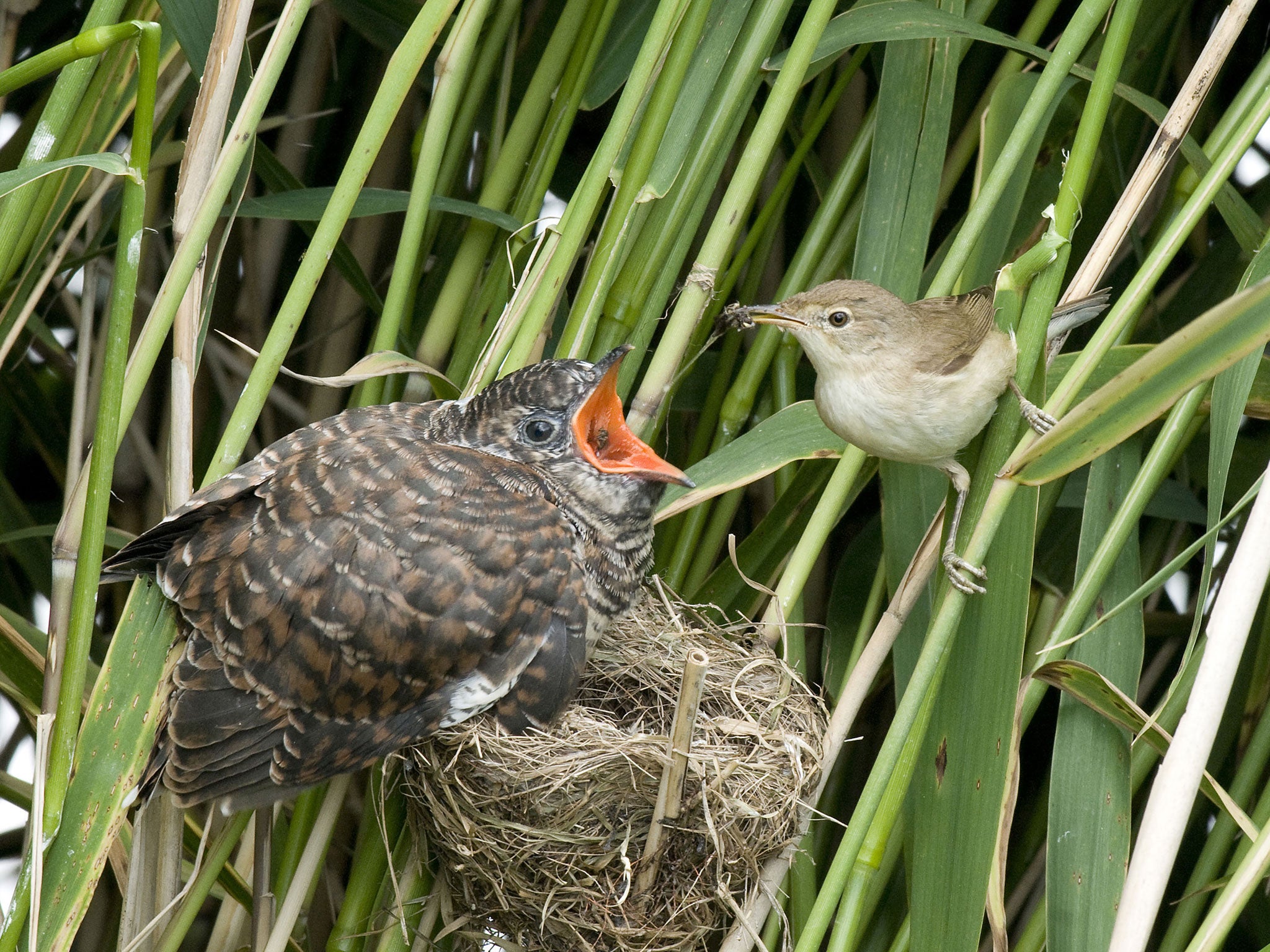Cuckoo: Cheating By Nature by Nick Davies, book review: Mystique of the bringer of spring
Davies gives a beguiling account of his 30 years' cuckoo-watching on the East Anglian fens

Your support helps us to tell the story
From reproductive rights to climate change to Big Tech, The Independent is on the ground when the story is developing. Whether it's investigating the financials of Elon Musk's pro-Trump PAC or producing our latest documentary, 'The A Word', which shines a light on the American women fighting for reproductive rights, we know how important it is to parse out the facts from the messaging.
At such a critical moment in US history, we need reporters on the ground. Your donation allows us to keep sending journalists to speak to both sides of the story.
The Independent is trusted by Americans across the entire political spectrum. And unlike many other quality news outlets, we choose not to lock Americans out of our reporting and analysis with paywalls. We believe quality journalism should be available to everyone, paid for by those who can afford it.
Your support makes all the difference.As the recognised harbinger of spring, the cuckoo has a starring role in British bird folklore, perched right up there at the top of the tree with nightingales, skylarks and owls. It features what is believed to be the oldest song in the English language, the 13th-century "Sumer is icumen in" (Lhude sing cuckoo!) and is referenced in poems by Chaucer, Shakespeare, Spenser, Milton and Wordsworth.
Even today, with cuckoo numbers in steep decline, people in the countryside compare mildly-competitive notes in April about hearing the first one of the year. And yet its reputation is vexed, for not only does its name signify delusion and/or cuckoldry, but a "cuckoo in the nest" remains a metaphor for an unwelcome interloper, and its breeding habits make it nature's most notorious cheat. The cuckoo's laying of eggs in other birds' nests, and her chick's subsequent ejection of other nestlings – obligate brood parasitism, to use the scientific term – was for centuries a source of anxiety to natural historians and writers, because it represented a routine, murderous selfishness in a natural order meant to embody God's omnibenevolence. Even worse, the culprit was a female.
Some pondered, but the less charitable blamed the mother. Gilbert White credited her with a "monstrous outrage on maternal affection", and as late as 1943, Frances Pitt, the naturalist, wrote an essay ("The Scandalous Cuckoo") denouncing her as "lazy, idle, languid, flirty, promiscuous and reprehensible." In the early 20th century, disputes about her techniques (the cuckoo's, not Ms Pitt's) at meetings of the British Ornithologists' Club became so heated that the committee forbade mention of them for fear of violence among members.
Fortunately, Nick Davies' beguiling account of his 30 years' cuckoo-watching on the East Anglian fens brings a far more sensible and revelatory approach to the subject. Davies is a leading field naturalist whose work will be known to Radio 4 listeners. He frames his research and discoveries as "a nature detective story", a natural history-mystery. Why, he asks, do cuckoos farm out their chicks in the first place? Why do they use the nests of some species but not others? And why do the hosts let them get away with it?
The how-dunnit story that emerges is one of "evolutionary arms races" between the parasitical cuckoo and its host species, with the former learning how to mimic specific song, plumage, behaviour and egg coloration to deceive its victims. The tale features astonishing insights into the processes of both evolution and scientific research, and it beguiles because of Davies' plain, personable style and his relating of his own experiments.
As a student, Davies was told that fieldwork would yield few discoveries compared with lab-based work such as DNA profiling. He rejected the notion, believing that ideas come in the field. And so the reader is taken nest-hunting, fake-egg planting and landscape-gazing. Rich, tactile description is lightly burnished with the poetic while illustrations by watercolourist James McCallum complete a package that will suit both dedicated twitcher and armchair naturalist alike, and gives springtime's feathered friend and fiend a fair hearing at last.
Join our commenting forum
Join thought-provoking conversations, follow other Independent readers and see their replies
Comments